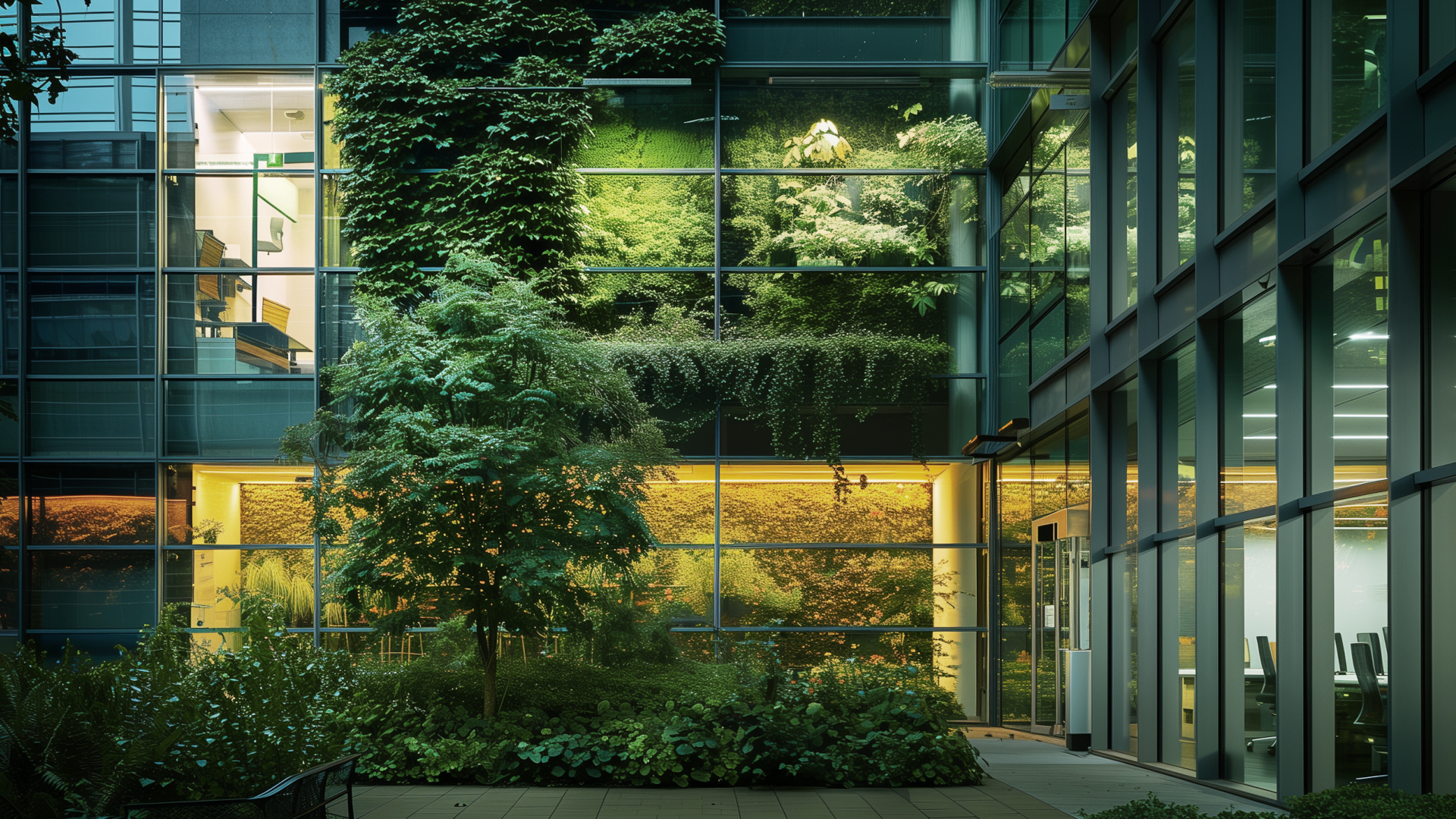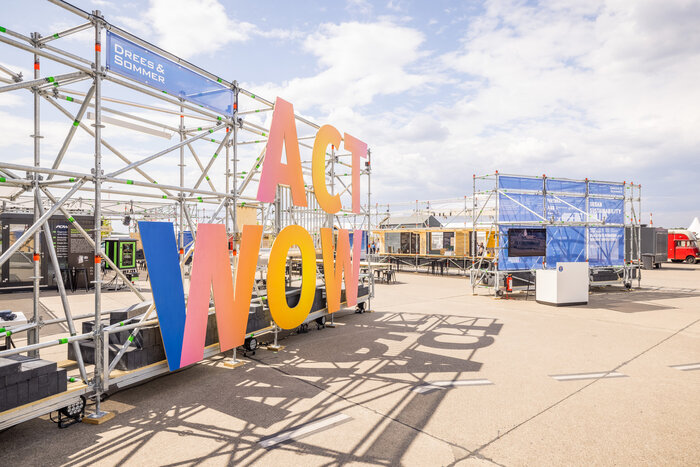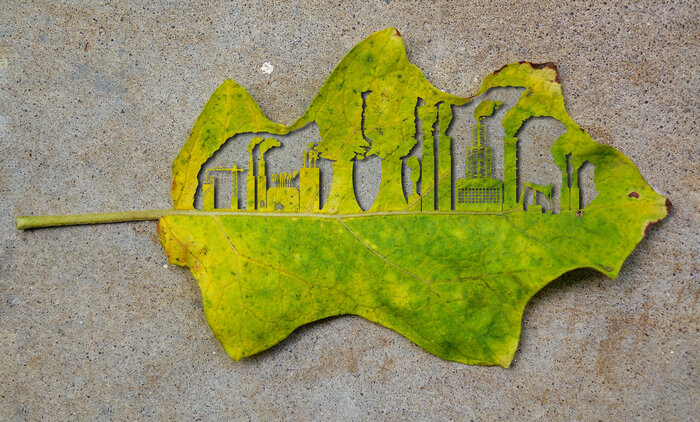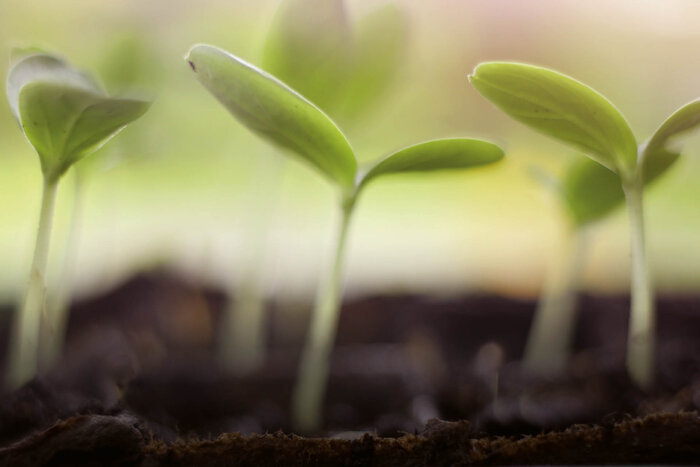Transitioning to Green Buildings

Buildings can be voracious, resources-gobbling monsters. Even during construction, they can devour vast amounts of energy and materials, and their appetite hardly diminishes over the many decades of their operation. But it’s a very different story with the Drees & Sommer office building Obere Waldplätze 12 (OWP12) in Stuttgart – as evidenced by its DGNB Platinum certification. But what exactly is Green Building certification?
The problematic environmental footprint of most buildings casts a poor light on the construction and real estate industry: The sector emits huge amounts of carbon globally and is also one of the world’s largest producers of waste.
Does the human ‘appetite for construction’ have to go hand in hand with a high level of destruction? Not at all, because there is another way. One that treads more carefully and takes a more intelligent approach – and is often ultimately more economical. And it’s not that difficult. After all, constructing and operating buildings is not rocket science. We have known for a long time how to rein in building monster’s hunger – renewable energy sources and efficient building services equipment, for example.
Measures must be coordinated
Or effective thermal insulation with good protection against summer heat. And user-oriented interior design. Plantings on rooftops and facades, as well as at ground level, create added value. As does the use of sustainable, recyclable materials. Not to forget smart integration into the surrounding district, for example, into the local transport system.
These individual measures must of course be coordinated with each other to ensure that they not only work as intended, but also offer people greater amenity and save money. So the question remains: How are all these factors measured, verified and documented?
Awards for different building classes
The solution is certification. Green Building certification has been around for twenty-five years or so, allowing truly sustainable buildings to be differentiated from the voracious monsters. Even though now widely established, the certification systems are still known by acronyms such as BREEAM and LEED, which are cryptic for nonprofessionals. In Germany, the seal of the DGNB (German Sustainable Building Council) has been firmly established in the construction and real estate industry since 2009.
The DGNB now offers specific usage profiles for different building classes, including for new office buildings, renovation projects, residential buildings, and even entire districts. There are four award categories: Bronze (only for established buildings), Silver, Gold and Platinum, the latter for buildings demonstrating particularly outstanding sustainability. DGNB also has a special Diamond award for ‘outstanding design and architectural quality’.
“Certification has to be built-in from the start”
Christian Luft, Associate Partner at Drees & Sommer, helped the OWP12 building in Stuttgart-Vaihingen achieve the top sustainability rating: DGNB Platinum. If you ask him about this work, his answer is initially surprising: “Certification has to be built-in from the start,” he says. The sustainable planning and construction expert explains it this way: “You can’t simply walk through the finished building and assess the end result after everything has been built. If you get involved in a project too late – during service phase 5 (detailed planning), for example – you will only have very limited influence on key certification factors, which are particularly crucial if you are aiming for Gold or Platinum.”
Christian Luft makes it clear that if you want to achieve sustainability certification for a green building, you have to integrate all the disciplines involved as early as possible into the planning process. And that starts with the idea for the project. The German schedule of services and fees for architects and engineers (HOAI) calls this ‘Service phase 0’, which precedes the conventional service phases 1 – 6. Phase 0 involves establishing user needs and, based on the results, developing spatial concepts and usage scenarios.
Feel-good factors are highly subjective
So is everything then cut and dried? Drawing on his many years of project experience, Christian Luft doesn’t think so: “A certificate alone, even one with a very high rating, is no guarantee that every user will feel at home in the building.” This is simply because people have different tastes. No matter how good a building is in terms of energy, cost-efficiency, environmental and objective user criteria, there will always be someone who finds it a bit too chilly, is blinded by the ceiling lights, or who does not like the open-plan areas. “And it’s not only people who are all fundamentally different. No two buildings are alike either, so planning and building is always something of a research undertaking,” says Luft, “but green building certification adds additional structure and offers potential for tangible improvements.”
What does the future hold for sustainability certification? Luft is optimistic: “It has long been clear that green buildings are generally also extremely cost-efficient. In addition to which, building regulations are continually being tightened. So I am sure that the future of green buildings and certification systems is in excellent shape. Also because demand for orientation in the property market is likely to grow as supply increases. ”



